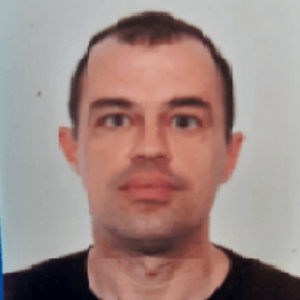Title : Resonant transport time in AlxGa1-xAs/GaAs nanostructures and mass discontinuity: A semiclassical path integral approach
Abstract:
In the current work, we investigate the dependence of the carrier transport time in an AlGaAs/GaAs heterostructure on the carrier’s effective mass discontinuity between the well and the barrier layer. The effective mass consists of a simple approximation to take into account the complexity of the carrier’s interactions and treat the carrier as a free particle. The mass discontinuity is directly related to the mole fraction of x, where x represents the concentration of Al. A double barrier potential in the direction of vertical growth is assumed to be the one-dimensional model effective potential of the system. The resonant tunneling mechanism is activated when a bias is applied between the emitter and the collector, which are both heavily doped GaAs regions. We calculate the system’s Green’s function through semiclassical path integration and get the complex spectrum. The imaginary part of the spectrum is the width of the resonant state of the well, which is the inverse of the corresponding lifetime. The latter is assumed to be equal to the carrier transport time and is given through analytic relations depending on various parameters, including the mass discontinuity factor. Thus, charge transport can be significantly boosted and controlled by the resonant tunneling effect. Charge transport depends on many different physical parameters, such as the energy value, the dimensions of the heterostructure, the model encountered for the description of the effective potential on the growth direction, the carrier’s effective mass, and others. Charge transport is maximized when the resonance conditions of the GaAs quasibound state well are met.
In our presentation, we will first briefly expand on the main characteristics of a generic potential modeling the heterostructure, consisting of a double barrier structure and a quantum well between them when a bias is applied. Next, we will present the path integral method and construct the system’s fixed energy amplitude. The latter reveals the complex resonance positions calculated in the next section. We show how to calculate transport time as a function of the mass discontinuity between the AlGaAs and the GaAs regions, and other characteristics such as the barrier width and height and the applied bias.
Audience Take-Away:
-
Someone can actually apply the method described here, to realistic AlxGa1-xAs/GaAs nano- structures and calculate the time needed for resonant transport.
-
As mentioned in the abstract, this work connects the effective mass discontinuity with transport time. It offers physical insight to the definition of the effective mass and possible corrections based on experimentally observed time scales of the heterostructure. In addition someone can learn about path integrals and think about expanding his teaching by incorporating the method.
-
Since the findings of the current work come in analytic form, a designer may vary Aluminum’s concentration to reach the desired transport time with high accuracy.
- New information: Transport time proves to act somehow as the nanostructure’s identity.




